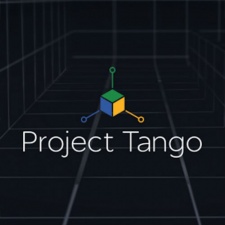If you haven't yet heard of Project Tango, you soon will.
Announced in March 2014, Project Tango is aiming to become the next essential tool for creating 3D models of the world around us. Its potential applications include creating augmented and virtual reality games, indoor mapping and medical uses like helping the blind navigate.
It's a tablet that was created by Google's Advanced Technology and Projects group (ATAP), formerly a division of Motorola.
It takes just one to Tango
Packing an Nvidia Tegra K1 mobile procesor, its imbued with more senses than most robots have, making it one of the most powerful Android devices created today.
But just how can that power be applied to games development? According to Project Tango’s product manager, Larry Yang, the possibilities are endless.
“We thinking gaming is a great use case for Project Tango,” he tells us. “You've seen our hand-held AR and VR experiences, where the Project Tango device serves as a magic window into a virtual world. You can now literally walk through stories and place objects in your physical world.
“For example, the team from Possible Games ported their popular puzzle game Adventures of Poco Eco to take advantage of Project Tango's motion tracking ability, where the user actually walks around in order to find the key camera views required to unlock levels.
“And Elemental Studios ported their Bike 3D Configurator to enable you to place a virtual bicycle in front of you that you can customize before ordering.”
Yang says that Project Tango was made possible by advances in mobile computing – including small form factors and low-cost sensors – that now mean computer vision is available to mass market consumers rather than just “million-dollar robots.”
The tablet packs a sizeable toolbox of tech, and each feature can be applied to games.
“Project Tango's wide-angle camera gives the device the ability to know their cm-scale position in the room without using GPS, WiFi or beacons,” explains Yang.
“The depth sensing camera allows the device to detect objects and surfaces. Together, Project Tango can procedurally generate a game that reacts to the actual position of the user and the objects around her.”
So when can we expect Project Tango on shelves?
“Qualcomm and Intel are major chipset providers to the mobile industry, and they've demonstrated integration of Project Tango into their mobile chipsets. This work will enable smartphone manufacturers to start shipping consumer devices in the next 18 months.”





















